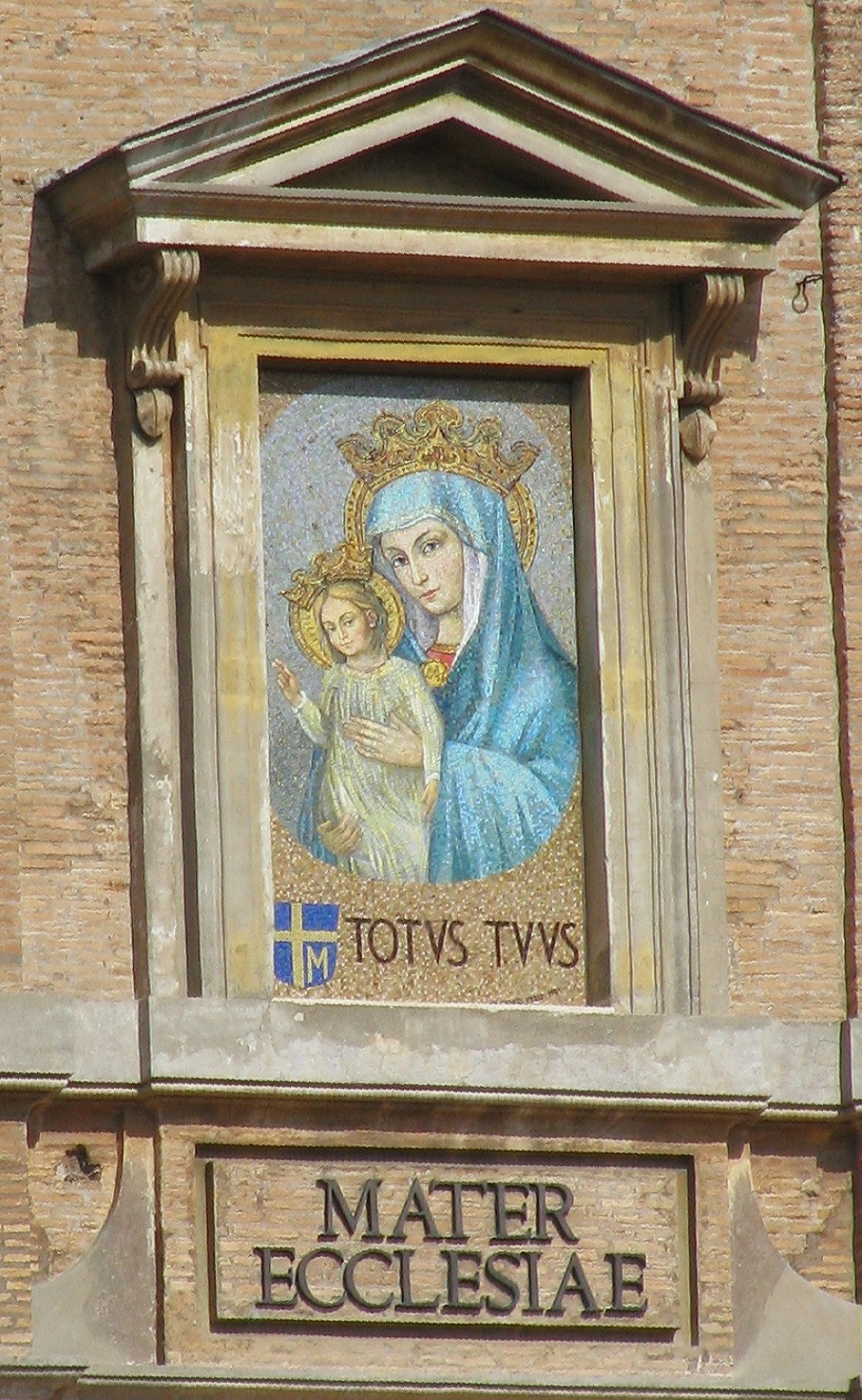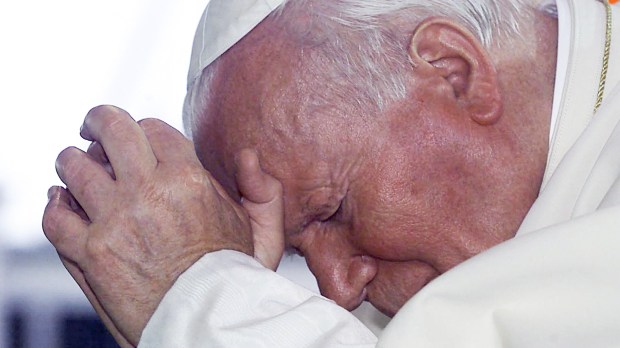Pope John Paul II (1978-2005) was the victim of an assassination attempt on May 13, 1981, the feast day of Our Lady of Fatima. He miraculously survived the attack, although he almost died. On the occasion of the recent 40th anniversary of this event, let’s look back at the important impact that this singular providential coincidence had on the pontificate of the Polish pope.
It was 5:17 p.m., and John Paul II was making several rounds in his popemobile in St. Peter’s Square before beginning his general audience. A man emerged from the crowd and, three yards from the vehicle, fired two—or three, according to some witnesses—pistol shots at the pontiff, who collapsed in the arms of his secretary, Archbishop Stanislaw Dziwisz. He was immediately rushed to the hospital. Turkish hitman Mehmet Ali Ağca, a close associate of the Turkish nationalist group “Grey Wolves,” had just attempted to assassinate John Paul II.
Wounded in the stomach, the right elbow and the index finger of the left hand, the 264th pope would survive, but not without having spent many months recovering in the hospital. He publicly pardoned his attacker on May 17, 1981 and met him in prison two years later: a fine example of Christian mercy on the part of the pontiff who would bear the physical scars of the assassination attempt for the rest of his life. However, another consequence would never disappear: a decisive Marian direction at the heart of the spirituality of the head of the Catholic Church, immediately resulting from this event.
A maternal rescue
The unusual aspects of the event first drew the attention of the doctors and surgeons who had been entrusted with the task of treating the Polish Pope. They revealed afterwards that they’d operated on him without really believing their patient would survive, given the seriousness of the damage inflicted on the pope’s body by the bullets. However, none of his vital organs was hit, and many see this as a sign from Heaven.
A professional shooter, Mehmet Ali Ağca most likely had no intention of missing his target. And yet, neither his experience nor his determination was able to direct the bullet to the pope’s heart. According to some members of the medical team, disconcerted by what they saw, one of the bullets seemed to have been “deflected.”
They weren’t the only ones who noted this as unusual: from the moment of his recuperation, this unexplained deflection was interpreted by John Paul II as a sign that something else had intervened to miraculously protect him. He would later confess that he immediately thought that it was the “hand” of the Virgin Mary.
The hand of the Virgin of Fatima
John Paul II was convinced of the intervention of the Virgin of Fatima, who had acted during the fateful moment to thwart the certain death that was facing him. He attributed his survival largely to her—although he obviously thanked the medical staff of the Gemelli clinic for their work.
A few months after leaving the Roman hospital, he said that he had felt Mary’s protection at the moment of the shooting: “At the very moment I fell in St. Peter’s Square, I had a strong feeling that I would be saved (…) one hand fired and another guided the bullet.” And the bullet missed its target.
The third secret
Since May 13 is the anniversary of the first apparition of Our Lady of Fatima, he linked his experience to the Virgin who is the patroness of Portugal. A year after his attack, he went to the Marian shrine at Fatima where he offered the bullet that had hit him to the local bishop. The bishop had it set in the solid gold crown of the shrine’s statue of the Virgin.
On June 26, 2000, John Paul II finally revealed, through Cardinal Joseph Ratzinger (the future Benedict XVI), the third secret of Fatima. As a precaution, this secret had never been made public by the popes. Although the content of these revelations is still controversial today, Cardinal Ratzinger assured us that this third mystery calls for the conversion of hearts and deals with the persecution of the Church and of the Successor of Peter. The Polish pontiff, like those around him, firmly believed in the interpretation that the assassination attempt against him was the fulfillment of this third secret.
John Paul II’s devotion to Mary
Karol Wojtyla’s Marian devotion did not begin the day after his assassination attempt. It was deeply rooted in the soul of the Polish people, and in his own. From his childhood, he made a habit of praying to Mary at various shrines in his country, especially that of the Black Madonna of Częstochowa.
The Blessed Virgin, he explains, was an important figure to whom he turned for comfort after the death of his mother when he was only 9 years old. He’d expressed this devotion as pope as early as 1978, taking as his motto “Totus Tuus” (“All yours [Mary],” in Latin), as a sign of his devotion to the Immaculate Heart of the Virgin.
A radical turn
However, after the event of May 13, 1981, John Paul II became totally devoted to Our Lady of Fatima, the apparition who revealed three “secrets” to the little shepherds Jacinta, Francisco and Lucia in 1917. Three times during the rest of his long pontificate he would make pilgrimages to the place of this revelation, more often than anywhere else. He also consecrated the world and Russia to the Immaculate Heart of Mary, as Our Lady of Fatima had asked the three shepherds.
A generally little-known detail of history: the pope was injured again during his visit to Fatima in 1982, by a Spanish fundamentalist priest who was convinced that the Pontiff was a “communist” agent! The priest was arrested and sentenced to six and a half years in prison. According to Cardinal Dziwisz, who said he witnessed the scene, the Polish pontiff was wounded again, but much less seriously. This time he kept the attack a secret, but saw it as another sign of the vital link between him as pontiff and the Portuguese apparition of the Virgin.
A mosaic of Our Lady, Mother of the Church
But that’s not all: a few months after the historic event, the Polish pope had a mosaic representing the Virgin Mary installed on the façade of the Apostolic Palace in St. Peter’s Square, in memory of her intervention. The pope’s motto is also inscribed there, a sign of the importance of Karol Wojtyla’s devotion to the Mother of God. Then in 2006, on the 25th anniversary of the attack, a commemorative plaque was placed at the spot in St. Peter’s Square where the pope was struck by the bullets of his assailant. It’s a historical place which any visitor or pilgrim to Rome can easily visit or go to meditate.

by Sixtine Waché and Camille Dalmas

